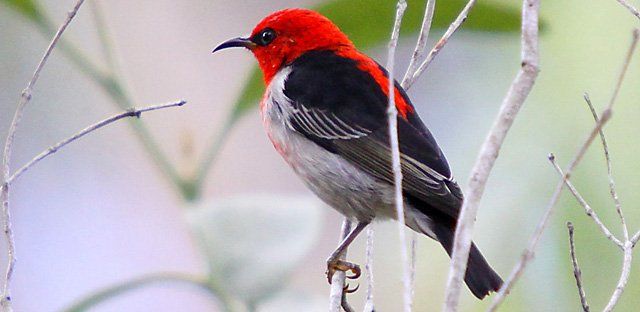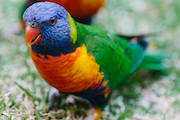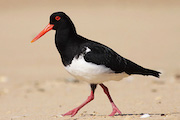Scarlet honeyeater
The tiny but beautiful scarlet honeyeater grows to only 11 centimetres. The male has a bright red head set against black wings and a white belly, while the female is dull brown with a white belly.

Where
The small scarlet honeyeaters are hard to spot as they inhabit the tops of the highest trees, following the unpredictable flowering of eucalypts. You’re most likely to see them in winter or spring when there are lots of flowering plants. If you are lucky you might also see them lower to the ground on flowering grevilleas and banksias.
You may hear the scarlet honeyeater before you see it - the call is a musical, tinkling chwip, swit-sweet-switty-switty-switty.
Feeding
Scarlet honeyeaters feed mainly on nectar and sometimes on fruit and insects, generally foraging high up in the canopy.
Breeding
The scarlet honeyeater breeds in pairs, with the more conspicuous male calling and displaying to the quieter females. Nests are a flimsy construction of bark and grass bound together with cobwebs, found in viney foliage.
The female incubates the eggs - commonly two or three eggs for a breeding pair - and both sexes feed the young. Up to three broods may be produced each season.
Sounds
A musical, tinkling chwip, swit-sweet-switty-switty-switty.
Stay in touch
Subscribe to receive important updates about Booderee National Park.




